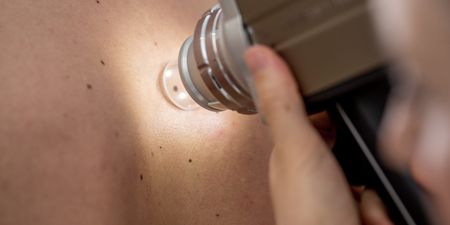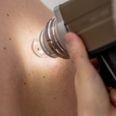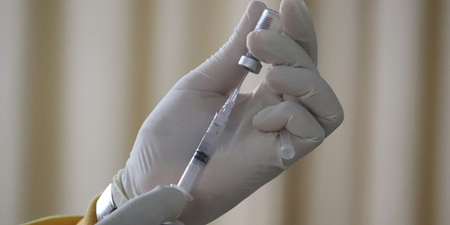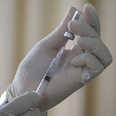From discarded colourful disposable vapes strewn across streets to the sticker-filled bins on every corner, vapes are everywhere
The number of people vaping has increased significantly in Ireland in recent years, with a worrying increase in vaping among children and young people.
According to the 2023 Healthy Ireland Survey, one in 12 adults (8 per cent) use e-cigarettes – a marked increase of six per cent since 2016.
Alarmingly, at least one in 10 children and young people (ages 12 to 17 years) vape, with usage more common in young boys than girls, and among older children and young people.

Health risks associated with vaping
Most vapes or e-cigarettes contain nicotine, making them highly addictive and a risk for nicotine dependence.
Nicotine can train the brain to be easily addicted to other substances and drugs, as well as put children and young people in a vulnerable position of developing mood disorders and control issues.
There are also physical side effects linked to using vapes with nicotine, which can cause a combination of any of the following:
- Nausea
- Vomiting
- Diarrhoea
- Cold, clammy skin
- Rapid pulse
- Dizziness
- Fainting
- Headaches
- Anxiety
- Increase sweating

What happens to your body when you quit vaping?
20 minutes later – breathing improves and heart rate normalises
In just 20 minutes after vape use, a person’s heart rate will begin to return to normal, blood pressure will drop, and circulation with normalise, according to Nikola Djordjevic, MD, per The Healthy.
Breathing may begin to improve, becoming less laboured, with clearer airflow, according to Caleb Backe, a certified health and wellness expert for Maple Holistics.
A couple of hours later – withdrawals
Because of nicotine’s addictive nature, withdrawal symptoms are likely hours after vape use has been halted.
Those quitting the habit may experience nicotine cravings, anger, frustration, irritability, difficulty concentrating, restlessness, or increased appetite, according to the National Cancer Institute.
Other symptoms of nicotine withdrawal include insomnia, anxiety, and depression.
Quitters may also experience physical side effects, such as headaches, sweating, tremors, insomnia, increased appetite, abdominal cramps, and constipation.
One day later – the chance of heart attack reduces
Former vapers have a decrease chance of a heart attack after making it through the first day without using an e-cigarette.
Smoking a vape can double the risk of heart attacks and in just one day, this chance begins to fall due to the lowering of blood pressure, rising of blood oxygen levels, the reduction of negative influence on cholesterol levels, and reduced forming of blood clots, Dr. Djordjevic says.
Three days later – nicotine free and senses improve
After three days, a ex-vaper will begin to see an improvement in their senses.
Similar to tobacco cigarettes, vapes can dull the senses, and after two or three days, the ability to smell and taste may be enhanced.
After three days, nicotine will be out of the system, bringing with it the strongest withdrawal symptoms, such as headaches, cramps, and extreme cravings.
Being mentally prepared for these can prevent a relapse.

One to three months later – lung health and blood circulation improves
In the first month free of nicotine, a person’s lungs will show signs of improvement.
Any previous smokers’ coughs, shortness of breath, and/or wheezing are likely to cease, with added improvements in lung capacity.
By three months, blood circulation will also be better, with blood vessels returning to their normal diameter.
According to 2016 research published in the journal Trends in Cardiovascular Medicine, nicotine in cigarettes constricts the blood vessels in the skin and around the heart.

Nine months later – the lung’s ability to fight infection returns
As the lungs see the renewal of microscopic hair-like structures, they begin to regain the ability to push out mucus and fight infections, according to the American Cancer Society.
This can help reduce infections like the flu and pneumonia, promoting overall health.
One year later – the risk of heart attack is halved
In just one year, cardiovascular risks will be cut to 50 per cent in former vapers and smokers.

10 – 20 years later – lower chance of cancer and cardiovascular health
By the ten-year mark, cancer and stroke risk will have significantly lowered.
By 15 years, coronary heart disease is close to that of a non-smoker.
If a person continues to remain nicotine-free for 20 years, their body will be as if they never smoked.
For more information or support to stop smoking or vaping, the HSE offers freetext and freephone helplines.
- Text QUIT to 50100
- Freephone 1800 201 203
READ MORE:
- Another David Nicholls novel is being made into a Netflix series
- Sophie Kasaei says BBL surgery ‘nearly killed’ her – Let’s talk about the dangers
- Georgia Steel steps away from social media due to cruel trolling – have we forgotten #BeKind?
- The rise of AI influencers: Beauty standards go from unrealistic to impossible




















































